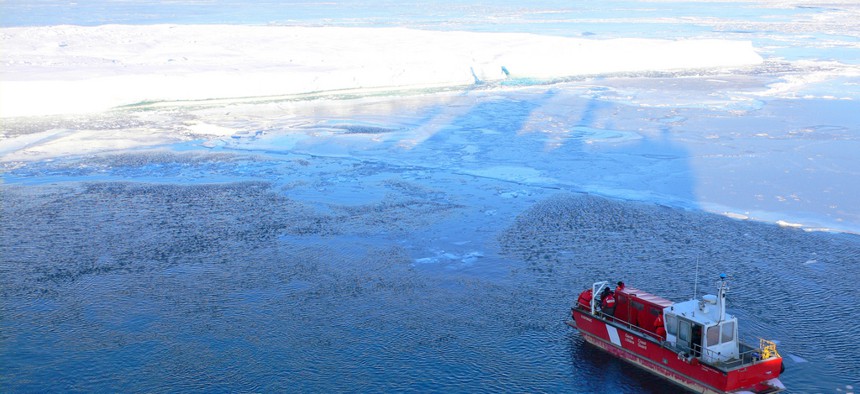Northwest Passage Fiber Optic Line Could Support Defense Arctic Strategy

The line would cross Canada's Northwest Passage. Flickr user MarineBugs
Network will offer 100 gigabit service to Aleutians and interior Alaska.
A Canadian company’s bold project to install a high speed fiber optic network across the roof of the world could provide the Defense Department with broadband connections to support its new Arctic strategy unveiled last week
Arctic Fibre of Toronto plans to start construction in May 2014 on its $620 million, 24 terabit network linking London and Tokyo with a route through the Northwest Passage. The network is slated to start operating in January 2016. It will have 100 gigabit spurs to areas of Alaska that have minimal or no communications links, Douglas Cunningham, the company’s president told Nextgov.
One leg of the undersea cable will directly serve tiny Shemya Island at the tail end of the Aleutian Islands chain, 1,200 miles southwest of Anchorage, Cunningham said. Shemya, two miles long by four miles wide, is home to Eareckson Air Station, home of the Missile Defense Agency’s powerful “Cobra Dane” radar, which can monitor missile launches from Russia and China and also track space debris.
Arctic Fibre also plans to run another 100 gigabit spur into Prudhoe Bay on the northern coast of Alaska and then down to the Dalton Highway to Fairbanks, Cunningham said, providing high speed connections to interior Alaska.
Interior Alaska is already served by terrestrial broadband networks connected to undersea cables that originate in Seattle, but Arctic Fibre, due to its short polar route, has the lowest latency of any cable route into the state and offers faster connections to cities in the mainland United States than other routes, Cunningham said.
Low latency on the main London-Tokyo link is one of the key selling points of Arctic Fibre to high high-speed stock traders who will “pay a premium” to shave milliseconds off a transaction, Cunningham said.
Cunningham said Arctic Fibre can help meet requirements outlined in the new Defense Arctic Strategy, which calls for “innovative, low-cost solutions for polar Command, Control, Communications, Computers, Intelligence, Surveillance, and Reconnaissance” -- or C4ISR.”
Defense C4ISR assets in the Arctic currently are “are extremely limited in latitudes above 70°N due to magnetic and solar phenomena that degrade high-frequency radio signals, limited surface-based relays outside of Alaska, and geostationary satellite geometry. High-data-rate satellite communications are sparse, but commercial low-rate service is available,” the Pentagon said in a 2011 report to Congress on Arctic Operations and the Northwest Passage.
Arctic Fibre has partnered with Quintillion Networks of Anchorage, which has exclusive rights in the state. Elizabeth Pierce, Quintillion’s chief executive officer told Nextgov that Arctic Fibre will offer high speed service to remote Alaskan communities at rates far below the cost of satellite service, which she characterized as both expensive and slow, with the best circuits offering only two megabits of throughput.
Quintillion will focus on service to coastal Alaska, including Prudhoe Bay, Shemya and communities such as Barrow, Wainwright, Kotzebue, and Nome, along with Adak Island, home of a major Coast Guard base and Unalaska, both in the Aleutians.
Quintillion plans to serve the Coast Guard, Defense installations and other government customers in Alaska and has engaged in talks with the Defense Information Systems Agency. Pierce said Quintillion made a low cost sales pitch to DISA on a “capacity lease” basis that does not require any up front funds.
By the time of this article’s publication, DISA had not yet responded to a Monday query from Nextgov on whether or not it has any plans to use Quintillion.
(Image via Flickr user MarineBugs)






